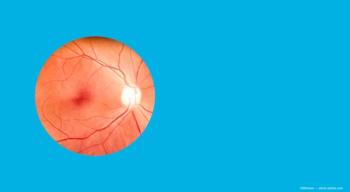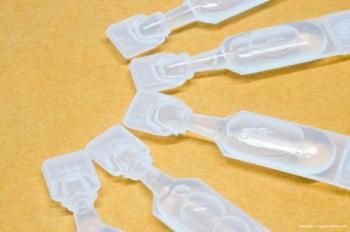
Glaucoma drugs not child’s play in pediatrics
Children are particularly sensitive to systemic side effects of topical glaucoma medications for a variety of reasons. Increased caution is necessary when using these agents.
TAKE HOME:
Children are particularly sensitive to systemic side effects of topical glaucoma medications for a variety of reasons. Increased caution is necessary when using these agents.
By Cheryl Guttman Krader; Reviewed by Yasmin Bradfield, MD
Madison, WI-Though all classes of topical glaucoma drugs have a role in the management of pediatric glaucoma, patient selection is critical for reducing the potential for systemic side effects in this population, said Yasmin Bradfield, MD.
“Topical glaucoma medications are prescribed on a daily basis in children with glaucoma, but the potential for systemic side effects must be kept in mind,” said Dr. Bradfield, associate professor, Department of Ophthalmology and Visual Sciences, University of Wisconsin, Madison. “In general, the younger the child and the lower the body weight, the higher the risk.”
Alpha-2 agonists
Central nervous system (CNS) toxicity with alpha-2 agonists, and particularly brimonidine, is one of the most serious systemic concerns associated with topical glaucoma medication use in children.
The alpha-2 agonists are lipophilic and easily cross the blood-brain barrier into the brain, which is rich in alpha-2 receptors. Stimulation of these receptors leads to increased parasympathetic outflow and decreased sympathetic outflow.
Sedation, somnolence, respiratory depression, apnea, and coma within 30 to 60 minutes postdosing have all been reported in infants and toddlers treated with topical brimonidine.
Cardiovascular side effects-hypotension and bradycardia-can also occur and are mediated by both the central and peripheral actions of the medication.
“In one study investigating 83 children treated with topical brimonidine, the frequency of CNS side effects was highest among children younger than 6 years of age and those weighing less than 20 kg,” Dr. Bradfield said.
“This information gives reason to be very cautious prescribing brimonidine to children less than 6 years old, and brimonidine is actually contraindicated in children younger than 2 years of age due to a lack of adequate research in that age group,” Dr. Bradfield added.
The increased sensitivity in infants and very young children is hypothetically due to their smaller plasma volume combined with immaturity of metabolic and excretion pathways that together result in excessive drug plasma levels.
In addition, CNS penetration and drug activity is enhanced in these youngsters due to their immature blood-brain barrier and increased receptor sensitivity.
“Following topical brimonidine administration, the plasma brimonidine level in a 1-month old child can match that achieved with IV drug administration,” Dr. Bradfield said.
Treatment of the systemic side effects of alpha-2 agonists involves discontinuation of medication and necessary supportive therapy. There are reports on use of naloxone to reverse the toxicity, but with varying success.
Beta blockers
Treatment with topical beta blockers is associated with risks of pulmonary and cardiac side effects, as well as masking of hypoglycemia. These medications are contraindicated in children with cardiac arrhythmias and asthma.
In addition, caution is advised when treating a child whose diabetes is newly diagnosed and who is still undergoing insulin dose titration, and when treating neonates due to a high risk of apnea, Dr. Bradfield said.
Theoretically, the beta-1 selective antagonist, betaxolol, has a lower risk for causing pulmonary and cardiac side effects than the non-selective drug timolol. When using timolol, strategies to reduce systemic absorption include punctal occlusion, closing the eyelid for about 10 seconds after drop instillation, and even blotting excess medication from the eyelid.
Carbonic anhydrase inhibitors, prostaglandin analogues
Among the carbonic anhydrase inhibitors, dorzolamide (Trusopt, Merck) specifically was found to be safe and well tolerated in children <6 years of age in a prospective, randomized, controlled multicenter study.
However, treatment duration was only 3 months. Possible risks with topical carbonic anhydrase inhibitors in infants include poor feeding and lack of weight gain, which may be a sign of metabolic acidosis.
Based on available data, the prostaglandin analogues appear to be very safe in children, although there are rare reports of asthma exacerbations, which are due to increased inflammatory mediators.
“A potential for development of cystoid macular edema with prostaglandin analogue treatment has not been found in children,” Dr. Bradfield said.
Related reference
• Coppens G, Stalmans I, Zeyen T, Casteels I. The safety and efficacy of glaucoma medication in the pediatric population. J Pediatr Ophthalmol Strabismus. 2009;46:12–18.
Yasmin Bradfield, MD
Dr. Bradfield has no relevant financial interests to disclose.
Newsletter
Don’t miss out—get Ophthalmology Times updates on the latest clinical advancements and expert interviews, straight to your inbox.



















































.png)


